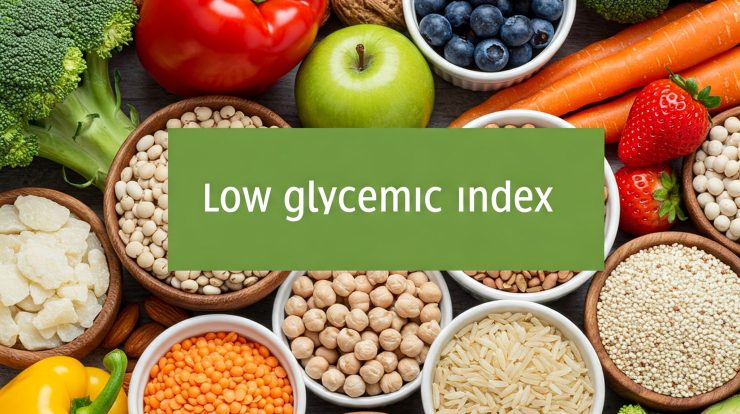
Acne is a complex skin condition influenced by various factors, including genetics, hormones, and inflammation. In recent years, diet – particularly the impact of high-glycemic foods – has gained significant attention as a potential contributing factor. This has led many people struggling with breakouts to explore a low-glycemic (low-GI) diet as a potential solution. But does it actually work? What kind of acne results can you realistically expect from changing your eating habits? This article examines the evidence linking low-GI diets to acne improvement and outlines potential outcomes.
Recap: How High-Glycemic Foods May Influence Acne
Before discussing low-GI diets, it’s helpful to briefly recap why high-GI foods are implicated in acne. High-glycemic foods (like white bread, sugary drinks, white rice, pastries) cause rapid spikes in blood sugar. This triggers a significant release of insulin and Insulin-like Growth Factor 1 (IGF-1). These hormonal surges are thought to:
- Increase sebum (oil) production.
- Stimulate androgen activity (hormones linked to acne).
- Promote inflammation throughout the body, including the skin.
- Potentially increase skin cell production, contributing to clogged pores.
This cascade creates an environment where acne breakouts are more likely to occur or worsen in susceptible individuals.
What is a Low-Glycemic Diet?
A low-glycemic diet focuses on consuming foods that cause a slower, lower, and more gradual rise in blood sugar and insulin levels. It emphasizes:
- Low-GI Carbohydrates: Whole grains (oats, barley, quinoa, brown rice), legumes (beans, lentils, chickpeas), most fruits, and non-starchy vegetables.
- Lean Proteins: Chicken, fish, tofu, eggs, lean meats.
- Healthy Fats: Avocados, nuts, seeds, olive oil.
It generally involves limiting or avoiding high-GI foods mentioned earlier (refined grains, sugary foods and drinks, highly processed snacks). The focus is on whole, unprocessed foods that provide sustained energy without drastic blood sugar fluctuations.
The Evidence: Low-Glycemic Diet and Acne Results
So, does switching to a low-GI diet actually lead to clearer skin? Several studies suggest it can be beneficial for some people:
- Intervention Studies: Multiple controlled studies have put participants on either a low-GI/low-glycemic load (GL) diet or a control (higher-GI/GL) diet for several weeks (often 10-12 weeks). Results consistently show that the groups following the low-GI/GL diet experienced a significant reduction in total acne lesion counts (both inflammatory and non-inflammatory pimples) compared to the control groups.
- Hormonal Markers: Some studies also observed favorable changes in hormonal markers, such as reduced androgen levels or improved insulin sensitivity, in participants on the low-GI diet, supporting the proposed biological mechanism.
- Observational Data: Larger population studies have also found correlations between diets with a high glycemic load and increased acne prevalence or severity.
- Limitations: While promising, it’s important to note limitations. Study durations are often relatively short, sample sizes can vary, and precisely controlling dietary intake is always challenging in research. More extensive, long-term studies are always valuable.
Overall, the current scientific evidence strongly suggests that adopting a low-glycemic load diet can lead to noticeable improvements in acne for many individuals.
What Kind of “Results” Can Be Expected? (Managing Expectations)
If you decide to try a low-GI diet for acne, what changes might you see?
- Reduction in Inflammatory Lesions: The most commonly reported benefit is a decrease in red, inflamed papules and pustules.
- Fewer New Breakouts: By helping to regulate hormonal triggers and reduce inflammation, a low-GI diet may lead to fewer new pimples forming over time.
- Potentially Less Oiliness: Some individuals may notice a reduction in overall skin oiliness due to the diet’s influence on sebum production.
- Gradual Improvement: Results are not overnight. Consistent adherence for at least 8-12 weeks is typically needed before noticeable improvements might occur.
- Individual Variability: This is crucial. Results vary significantly. Some people see dramatic improvements, while others notice only mild changes or none at all. Your individual genetics, hormone sensitivity, and other contributing factors play a huge role.
- Not a “Cure-All”: A low-GI diet is a management strategy, not a guaranteed cure. It’s unlikely to completely eliminate acne, especially moderate-to-severe cases, without other interventions.
- No Effect on Existing Scars: Dietary changes affect inflammation and new lesion formation; they cannot repair existing textural acne scars (indented or raised).
Tips for Implementing a Low-Glycemic Diet for Acne
- Focus on Whole Foods: Prioritize fruits, vegetables, whole grains, lean proteins, and healthy fats.
- Increase Fiber: Fiber helps slow sugar absorption. Include plenty of legumes, vegetables, and whole grains.
- Limit Sugary Drinks: Swap soda, sweetened juices, and sugary coffee drinks for water, herbal tea, or unsweetened beverages.
- Reduce Refined Carbs: Choose whole-wheat bread over white, brown rice over white, oats over sugary cereals.
- Read Labels: Be mindful of added sugars in processed foods, sauces, and snacks.
- Combine Foods: Pairing carbohydrates with protein and healthy fats can help slow down glucose absorption.
- Consider Professional Guidance: A registered dietitian can help you create a balanced and sustainable low-GI eating plan.
Beyond Diet: A Holistic Approach
Remember, diet is just one potential factor influencing acne. A holistic approach is most effective:
- Consistent Skincare: Use a gentle cleanser, appropriate topical treatments (OTC or prescription), moisturizer, and daily sunscreen.
- Stress Management: Find healthy ways to manage stress.
- Adequate Sleep: Aim for 7-9 hours per night.
- Avoid Picking: Don’t squeeze or pick at breakouts.
- Medical Treatment: Consult a dermatologist for persistent or severe acne.
Conclusion
Based on current scientific evidence, adopting a low-glycemic diet shows significant promise for improving acne results in many individuals. By minimizing blood sugar spikes and the subsequent hormonal and inflammatory responses, this dietary approach can lead to fewer breakouts and reduced inflammation over time. However, results are gradual, vary greatly from person to person, and a low-GI diet is not a standalone cure, nor will it affect existing scars. It’s best viewed as a beneficial lifestyle strategy and a valuable component of a comprehensive acne management plan that includes proper skincare and professional guidance when needed.
